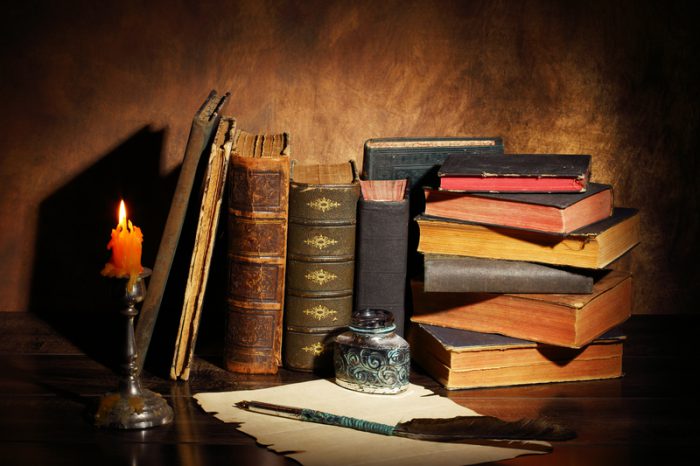DNA.
Even if you don't understand exactly how it all fits together, you probably know what it generally is. This molecule is the utterly unique blueprint of a living thing. And not just unique from one species to the next. Within each individual living thing—from bee to tree, to you to me—there is a one-of-a-kind DNA structure.
Microscopic view of DNA molecule. (Getty Embed)
This is why after it was discovered, DNA became the gold standard in studying living things. The most famous example of this is, of course, using DNA evidence to prove whether or not someone committed a crime. But it is also used to analyze behaviour, special abilities, resistance to diseases, and so much more. Your DNA molecule is kind of like your own biography—the story of you, written in a chain of atoms.
Hmm. Speaking of books ...
Turn to the page
(Getty Embed)
There is a new trend in studying DNA that is being taken from the pages of old books. As in, the genetic molecules are literally inside the pages themselves. How exactly?
In ancient times, most books weren't written on pages made from paper. Instead, they were written on parchment, a thin paper-like material made from the skins of animals like cattle, sheep, and goats. As it turns out, parchment is also a tremendous source of DNA, not to mention far easier to find than the previous best source—old bones buried in the ground.
So instead of hoping to come across animal bones that were relevant to a time and place that you were studying, you can now simply check out a book that was made during that era and sample its pages. Now that is some next level library research!
Telling a better story about the past
(Getty Embed)
To be clear though, the kind of parchment books that we're talking about aren't the kinds of things that you'll find just laying around the school library. These are medieval books that are already valuable artifacts themselves. In fact, that's why researchers have had to be creative in how they sample the parchment. After all, you can't just go chopping up the pages of a one-of-a-kind book!
As researcher Matthew Collins recently told The Atlantic, he and his colleagues were able to remove DNA samples by collecting shavings from the erasers used to clean old parchment. Brilliant!
Put together, this DNA evidence can tell archeologists stories about how ancient societies lived, what they ate, diseases of the time, and so much more. So there you have it—history is written on the page, in more ways than one!
 Meet your new biology textbooks... (© Aleksandar Kosev - Dreamstime.com)
Meet your new biology textbooks... (© Aleksandar Kosev - Dreamstime.com)










Wow! So cool! I wish I could do things like that! 😎 😎 😎